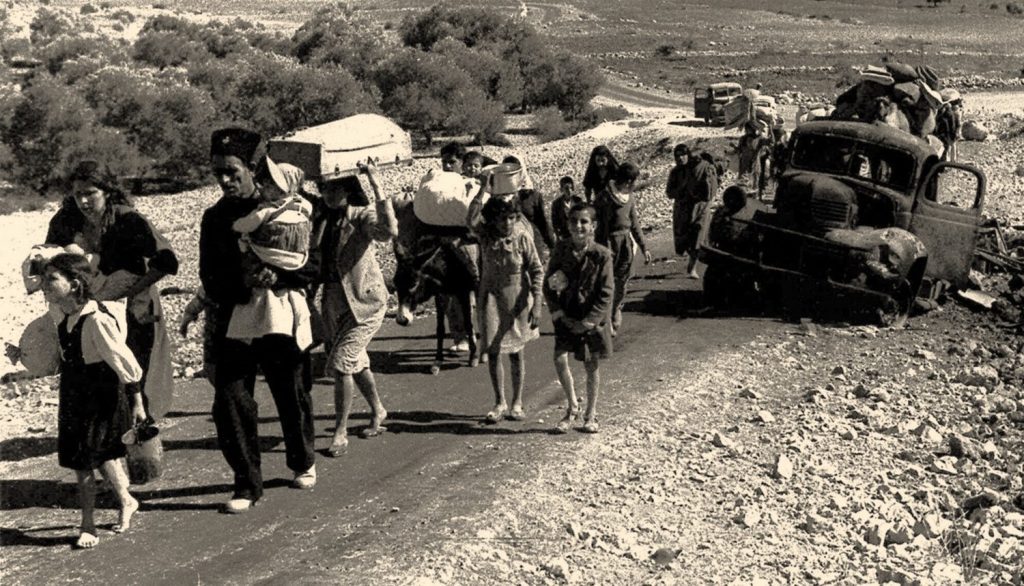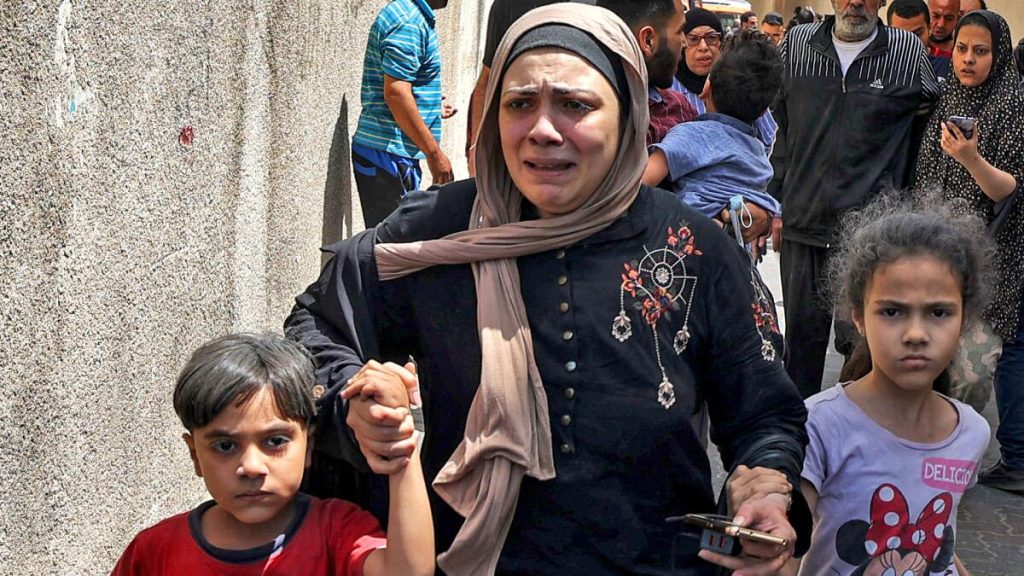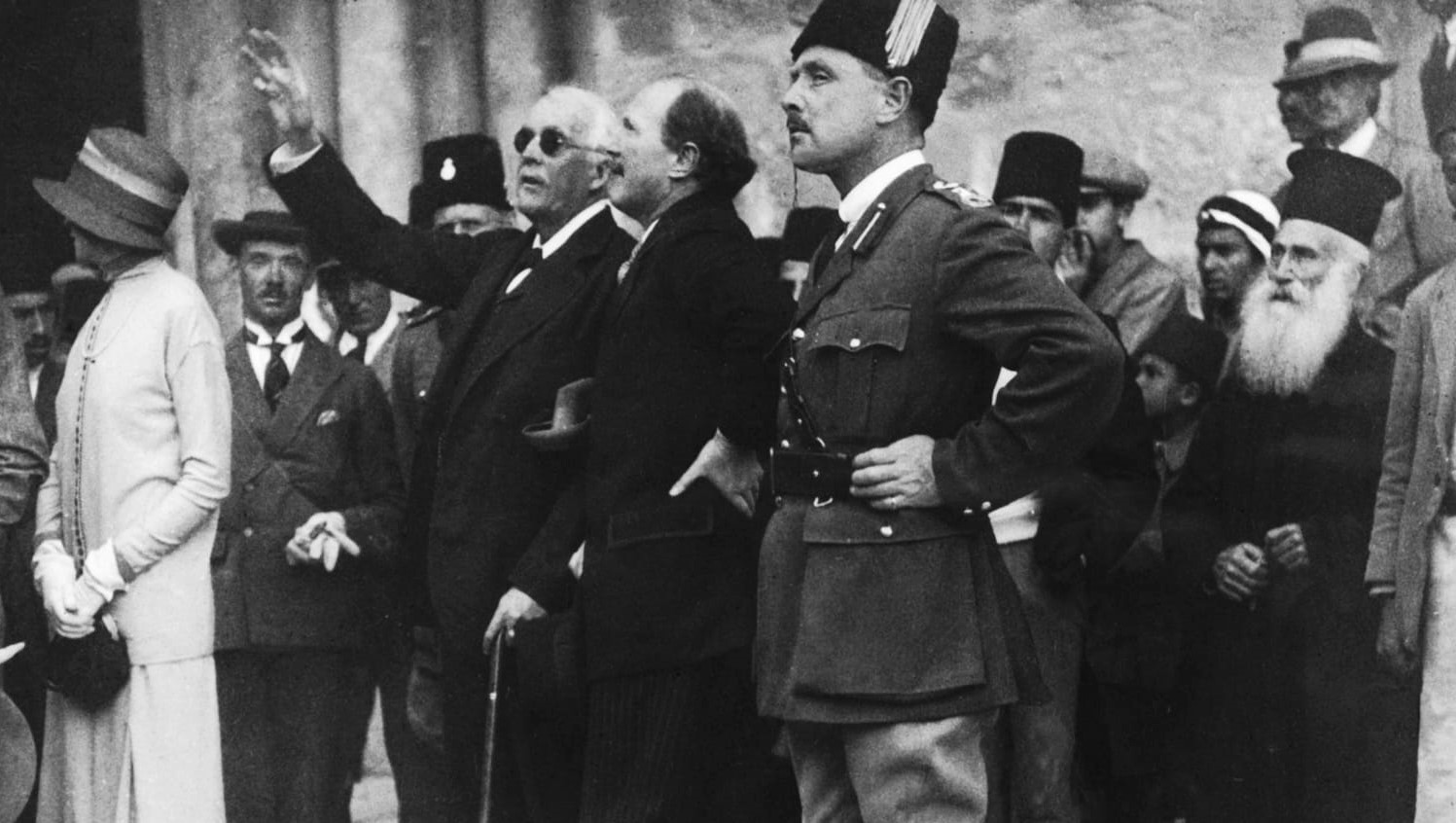Before 1948, what was Israel like, and what was the Balfour Declaration?
After the Ottoman Empire, which had dominated that region of the Middle East, was defeated in World War One, Britain seized control of the region known as Palestine. A majority of Arabs and a minority of Jews lived in the region, along with many smaller ethnic groups.
When the international world tasked the UK with creating a “national home” for Jews in Palestine, tensions between the two peoples increased.
This was a result of the 1917 Balfour Declaration, which was a promise given to the Jewish population in Britain by then-foreign secretary Arthur Balfour. The proclamation was accepted by the newly established League of Nations, which served as the model for the United Nations, in 1922 and was codified in the British mandate over Palestine.
Although Palestinian Arabs also claimed the land and were against the relocation, Jews considered Palestine to be their ancestral home. Jews began to arrive in greater numbers between the 1920s and the 1940s; many of them were escaping persecution in Europe, particularly the Nazi Holocaust during World War Two.
There was also a rise in violence against British rule and between Jews and Arabs. The UN decided in 1947 to divide Palestine into Jewish and Arab states, with Jerusalem becoming a global metropolis.
Though it was never carried out, the Arab side rejected the idea, which was approved by Jewish officials.

Israel’s creation: how and why?
Jewish leaders proclaimed the establishment of the State of Israel in 1948 after Britain left due to its inability to resolve the issue. It was meant to serve as both a sovereign homeland and a safe refuge for Jews escaping persecution.
Five Arab nations attacked Israel the day it became a nation after months of fighting between Arab and Jewish militias. There was a “Catastrophe” known to the Palestinians as Al Nakba, when hundreds of thousands of them were forced to flee their homes.
Israel possessed most of the region by the time the battle came to an end in a truce the following year. Egypt occupied Gaza, and Jordan occupied what became known as the West Bank. East Jerusalem was occupied by Jordanian forces, while West Jerusalem was occupied by Israeli soldiers.
In the decades that followed, there were further conflicts and violence because there was never a peace treaty.
Israel captured most of the Syrian Golan Heights, Gaza, the Egyptian Sinai Peninsula, East Jerusalem, and the West Bank after a 1967 conflict.
The majority of Palestinian refugees and their offspring reside in Gaza, the West Bank, and the surrounding countries of Lebanon, Syria, and Jordan.
Israel has forbidden both them and their descendants from going back to their original homes because, in its view, doing so would destabilise the nation and endanger Israel’s status as a Jewish state.
While the Palestinians claim East Jerusalem as the capital of their future state, Israel continues to occupy the West Bank and claims Jerusalem as its entire capital. Only a few nations accept the city as the capital of Israel, including the US.
Israel has built settlements in the West Bank and East Jerusalem over the past 50 years that are home to over 700,000 Jews.
Although Israel disputes this, the UN Security Council and the UK government, among others, believe that settlements are unlawful under international law.

Gaza Strip definition: what is it?
Gaza is a small area of land with a short southern border with Egypt, but it is surrounded by Israel and the Mediterranean Sea. At just 41 km (25 miles) long and 10 km wide, it is one of the most densely populated areas on Earth, home to almost two million people.
Following the 1948–1949 conflict, Egypt occupied Gaza for 19 years. During the 1967 conflict, Israel invaded Gaza and remained there until 2005, during which time it established Jewish settlements.
Israel kept control over its shared border, shoreline, and airspace even after it removed its settlers and military in 2005. The UN still considers Israel to be the occupying force in the area.
How do Israelis and Palestinians differ?
The two parties are at odds over a variety of issues.
These consist of:
What needs to take place with Palestinian refugees?
Whether Jewish settlers in the West Bank should remain under occupation or be evacuated
Whether Jerusalem should be shared by the two sides
And possibly the trickiest of all, whether Israel should be accompanied by a Palestinian state

In order to resolve these issues, what steps have been taken?
Between the 1990s and the 2010s, there were intermittent peace negotiations between Israel and the Palestinians, interrupted with violent outbursts.
A negotiated peace did seem possible at first. The Oslo peace process, which began with a series of covert negotiations in Norway, was immortalised in 1993 with a ceremony led by President Bill Clinton on the White House lawn.
The Palestine Liberation Organisation (PLO), Israel’s longtime foe, was acknowledged by both the Palestinians and the State of Israel as the exclusive representative of the Palestinian people in a momentous occasion. It was decided to create a Palestinian Authority that would have autonomous governance.
However, soon after, there were cracks, with opposition leader Benjamin Netanyahu characterising Oslo as a grave threat to Israel. The goal of resettling Jews in the conquered Palestinian territory was expedited by the Israelis. Hamas, a terrorist Palestinian organisation that just surfaced, despatched suicide bombers to kill Israeli citizens and destroy any hopes of a deal. As conditions in Israel worsened, Israeli Prime Minister Yitzhak Rabin was assassinated on November 4, 1995, by a Jewish extremist.
Efforts were made in the 2000s to bring the peace process back to life, and in 2003 the global powers created a roadmap with the ultimate goal of a two-state solution. However, this blueprint was never put into action. After negotiations between Israel and the Palestinians in Washington failed in 2014, peace attempts eventually came to a standstill.
The US-prepared peace plan from the previous administration, which was dubbed “the deal of the century” by Prime Minister Netanyahu, was rejected by the Palestinians as being biassed and never materialised. It was drafted under President Trump’s administration.

A Palestinian woman cries as civilians evacuate a building targeted by Israeli bombardment in Gaza City – Israel launched deadly air strikes on Gaza in response to a barrage of rockets fired by the Islamist movement Hamas amid spiralling violence sparked by unrest at Jerusalem’s Al-Aqsa Mosque compound. (Photo by MAHMUD HAMS / AFP) (Photo by MAHMUD HAMS/AFP via Getty Images)
What is the reason for the current conflict between Israel and Gaza?
On October 7, hundreds of gunmen infiltrated towns close to the Gaza Strip as part of an unprecedented attack on Israel by the terrorist Palestinian group Hamas.
Over 1,400 Israelis lost their lives in the conflict, and according to the Israeli military, 230 troops and civilians, including women and children, were taken prisoner and transferred to Gaza. The Israeli military has responded by carrying out airstrikes and artillery strikes in Gaza that have killed over 8,000 Palestinians, according to the health ministry in Gaza, which is overseen by Hamas. Along the Gaza border, Israeli troops have also gathered, and Palestinians are preparing for a significant ground operation. Along with cutting off most water and electricity, Israel has also banned importing food and medicine. However, beginning Saturday, it has permitted the passage of several dozen relief trucks through Egypt’s Rafah crossing.
Hamas, an Islamist organisation that is dedicated to destroying Israel and is listed as a terrorist organisation by the UK and many other nations, is in charge of Gaza.
The Palestinian territories had their final elections in 2006, with Hamas emerging victorious. The following year, the organisation toppled Fatah, the opposing movement led by President Mahmoud Abbas, and took control of Gaza. Since then, Israel and Egypt have maintained a partial embargo on the Gaza Strip in an effort to isolate Hamas and put an end to attacks, especially the random firing of rockets against Israeli cities. This has resulted in multiple wars between militants in Gaza and Israel.
The Palestinian community in Gaza contends that Israel’s airstrikes and restrictions on crowded places are meant to punish everyone collectively. This year has been the deadliest on record for Palestinians living in the occupied West Bank and East Jerusalem. They also take issue with the limitations and military operations that are implemented there in reaction to fatal Israeli attacks.
These tensions might have had a role in Hamas’s most recent strike. Yet, it’s also possible that the militants wanted to increase their support among regular Palestinians. One possible tactic would have been to use hostages as leverage to get Israel to release some of the 4,500 Palestinians that are said to be detained in its jails.

In the current conflict, who supports Israel and who does not?
The attack on Israel by Hamas has been denounced by the US, the EU, and other Western nations.
The US, Israel’s closest friend, has offered more weapons, air defence missiles, guided bombs, and ammunition in addition to providing the Jewish state with more than $260 billion in military and economic assistance over the years.
In an attempt to prevent Israel’s adversaries, namely the Hezbollah movement in Lebanon, from starting a second front in the conflict, it has also dispatched two aircraft carrier strike groups to the eastern Mediterranean.
China and Russia claim to be in communication with both sides of the dispute but have declined to denounce Hamas. Vladimir Putin, the president of Russia, has attributed the lack of Middle East peace to US strategy.
Israel’s worst adversary, Iran, is a major backer of both Hezbollah and Hamas, whose fighters have been engaging Israeli soldiers in firefights virtually every day since Hamas’s onslaught.
Iran’s involvement in the Hamas attack has come under scrutiny after it was reported to have given the go-ahead a few days prior. However, Tehran has refuted any involvement.








0 Comments